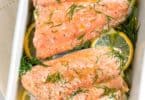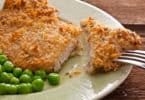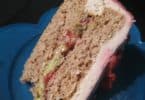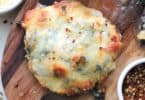Learning how to bake ham is not a difficult task. Since it is a common meat served at holidays and during family gatherings, it is beneficial for the cook to know how to correctly cook a ham to preserve flavor and avoid dryness.
Preparation
Frozen hams can be cooked straight out of the freezer or thawed before cooking. Thawing is recommended to lessen the baking time. There are typically two methods to thawing the meat: cold water or the refrigerator. If thawed in cold water, change the water every 30 minutes. Place the meat in a air-tight bag to avoid losing color or flavor. Thawing in cold water takes 30 minutes per pound of meat. Thawing in the refrigerator generally takes longer, but it all depends on the size of the ham.
Baking
When ready for baking, place the ham in a large roasting pan lined with aluminum foil. Be sure the cut side of the meat is facing up. Depending on the flavor you wish to achieve, some ingredients should be added onto the ham prior to baking. Pineapples and cherry can be added to the ham and held in place with toothpicks. For added flavor, pour pineapple juice over the ham as well. Another popular additive when baking a ham is a soft drink. Pour a generous amount of Coca-Cola over the ham, and spoon it over the ham each time you check on the meat. If adding a glaze, do so within the last hour of cooking.
Preheat the oven to 350 degrees before placing the ham in the oven. Look at the meat often to check for dryness. If this occurs, reduce the heat or a liquid to the meat. Allow 20 to 30 minutes cooking time for each pound. The ham should be turned halfway through to allow for even cooking. Avoid using sharp utensils for this, as any punctures to the meat can result in losing juices.
Serving
When the ham appears to be done, check the internal temperature with a meat thermometer. To avoid overcooking, remove the meat from the oven when it has reached 160-170 degrees. Allow it to sit for 15 minutes before slicing and serving. This waiting period will allow the meat to completely finish cooking, as well as prevent any juices from being lost. When the meat is still very hot, the juice is thinner and easier to escape. As the ham cools, the juice will begin to thicken and stick to the meat better.
Baking a ham involves a great deal of time, but not a lot of effect on the part of the chef. Following a systematic process will ensure the meat is delicious and busting with flavor.
<>







